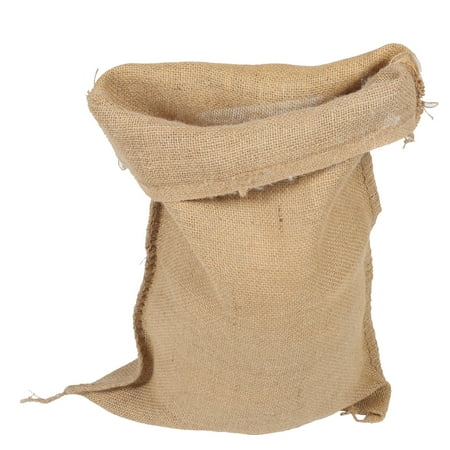How to store bulbs before planting – 3 expert tips to keep them in top condition
Discover how to store bulbs properly - as it isn’t always possible to plant them as soon as they arrive

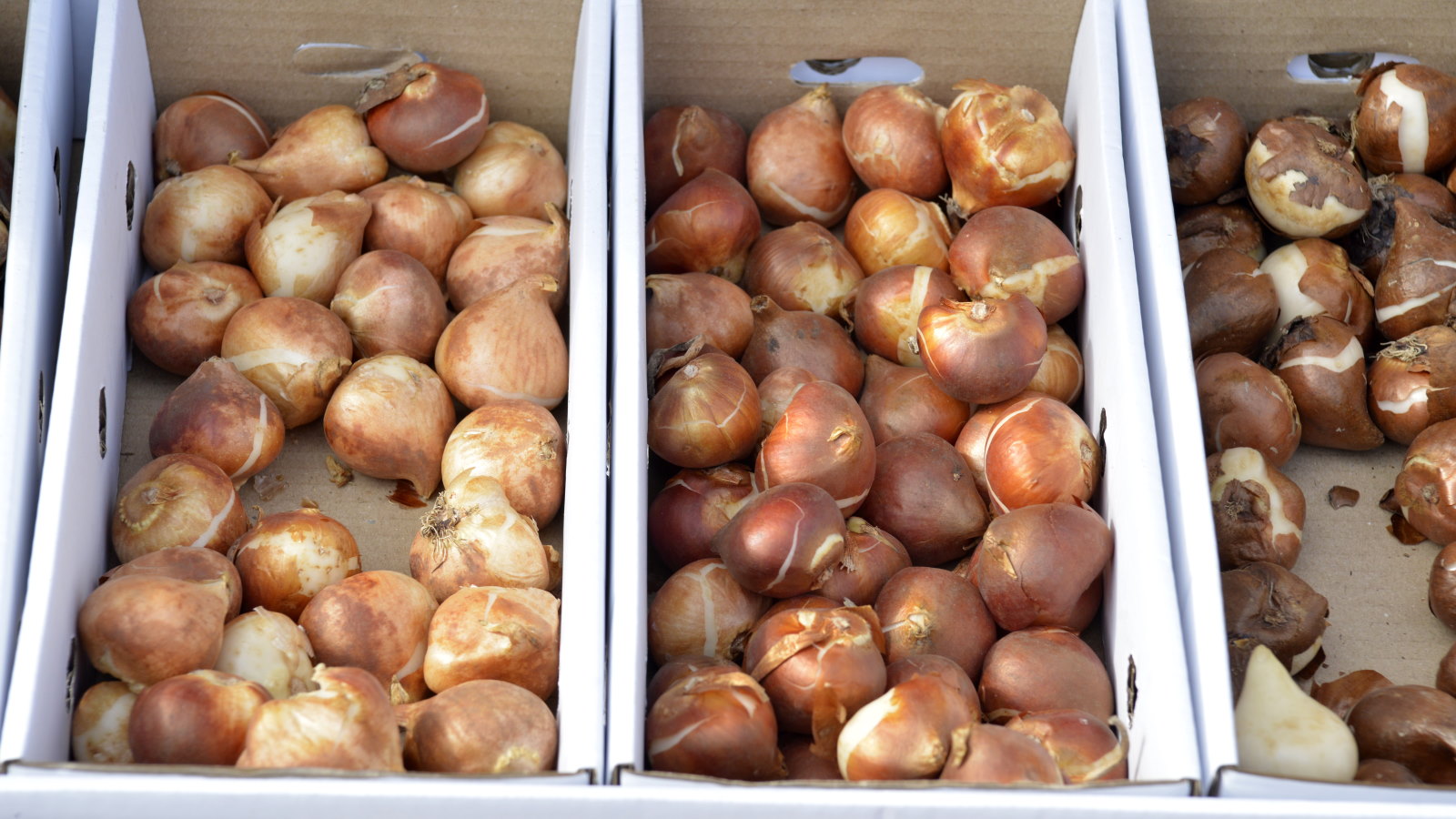
Buying bulbs is an exciting and economical way to add color to a space. Early fall is a great time to buy spring bulbs but, while it is better to plant bulbs quickly after you get them, there will be times you need to store them to plant at a later date.
For example, many growers may get their daffodils, hyacinths, alliums, tulips, and other spring bulbs in one go. However, the time to plant various spring bulbs alters and you may have to store tulip bulbs as they are often planted later than others.
If you cannot plant fresh bulbs immediately, for any reason, storing them in the right conditions, and in a suitable container, ensures they won’t deteriorate. Knowing how to store bulbs can keep your purchased bulbs in top condition and also gives you the tools to lift and store bulbs to plant again next year.
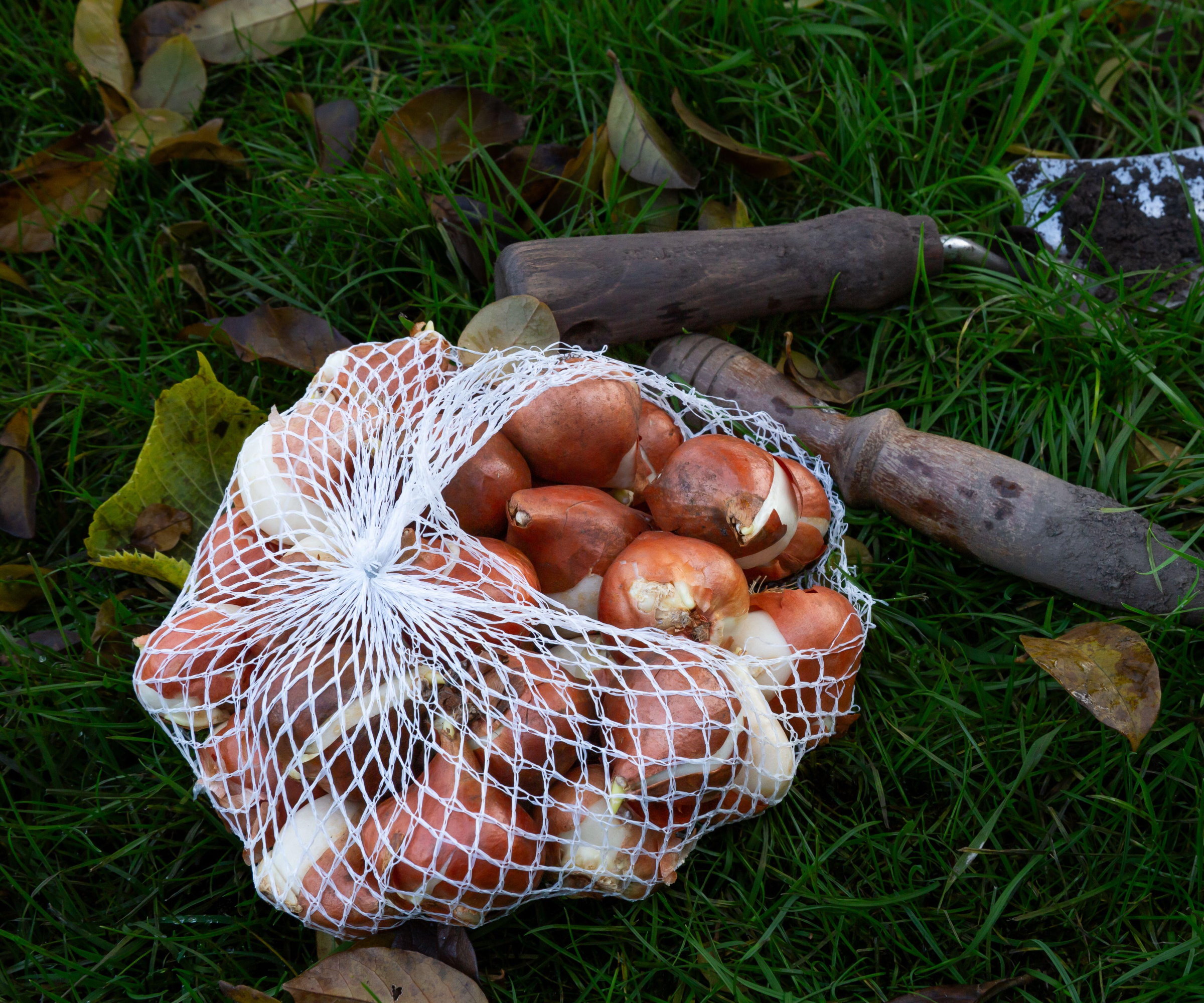
How to store bulbs
Whether you order bulbs to plant or lift bulbs to overwinter, there are different reasons to learn how to store bulbs correctly. Storing bulbs properly, whether for a short period or throughout winter, keeps them in good condition and ready to grow again once put outdoors or the bulbs planted in pots.
How to store bulbs until planting - 3 tips to follow
There are three golden rules recommended to stick to for storing bulbs, whether purchased bulbs waiting to be planted or lifted bulbs. The same rules outlined below will apply in both circumstances.
- Spring bulbs are planted in fall, they can be stored for a few weeks before planting but shouldn’t be stored till the following year. It is not advised to plant these bulbs in January or beyond as they will deteriorate if left in storage too long.
- Tender bulbs are lifted before the frosts. All soil wants to be removed and stems and foliage removed. They must be dried before being stored as any moisture left inside the bulbs can cause rot.
1: Check the bulbs
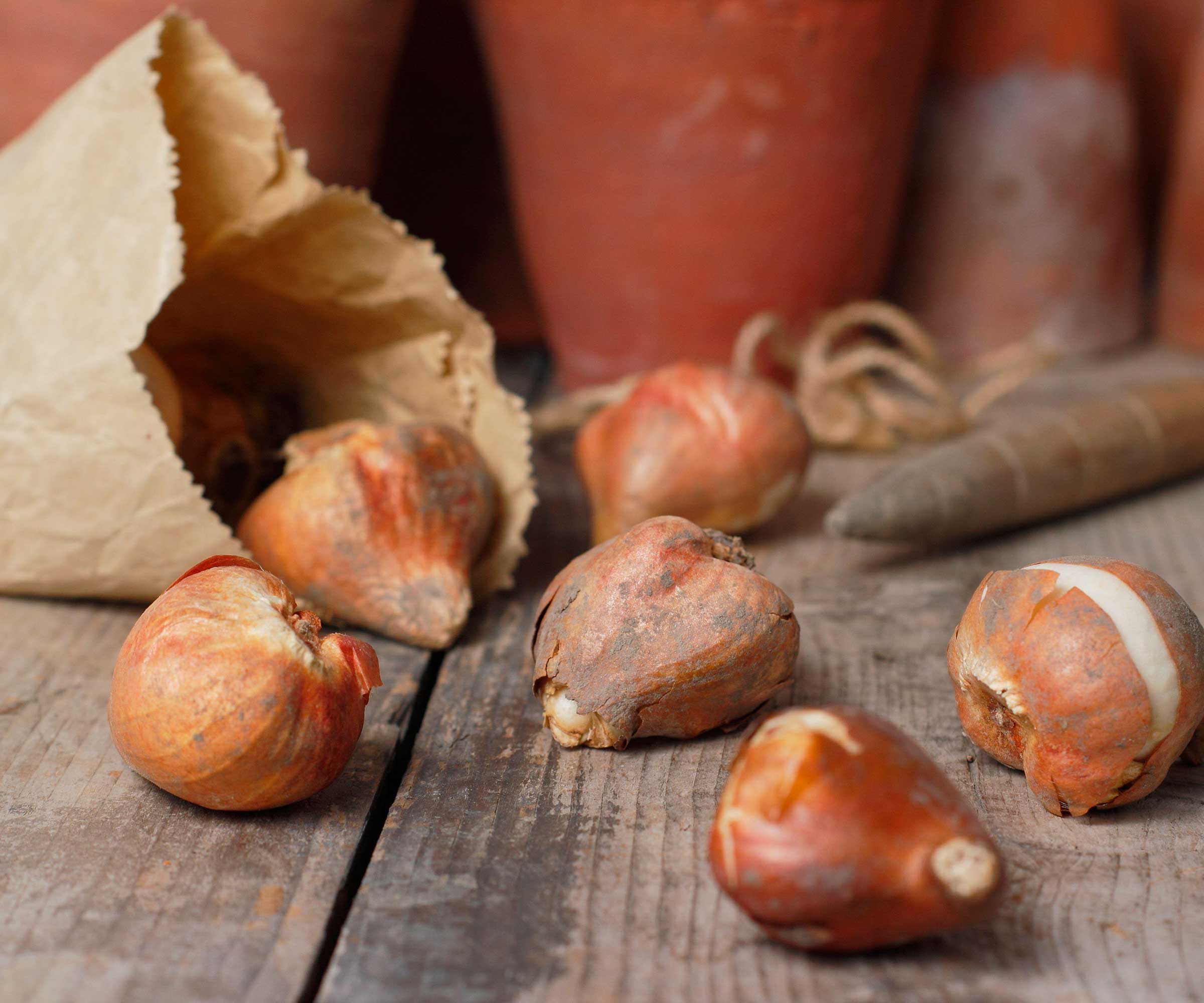
Unfortunately, even if you have purchased fresh spring bulbs to plant, there is no guarantee that every bulb you receive will be of the highest quality. That is especially true if buying bulbs online, or bulk buying bulbs to plant. Unpack the bulbs from their containers and check them individually to keep only the best quality bulbs.
‘When your bulbs arrive, I suggest opening your packages up and inspecting them,’ recommends Thomas Rutter, a former professional gardener and content editor at H&G. ‘If any of the bulbs feel soft or show signs of mold or rot, remove them before storing. One rotten bulb can spoil the bunch.’
Design expertise in your inbox – from inspiring decorating ideas and beautiful celebrity homes to practical gardening advice and shopping round-ups.
The same quality inspection must take place of any bulbs lifted from the yard to overwinter. Whether you are planting tulip bulbs, daffodils, or any other bulbs, any that have holes in or feel soft and show signs of decay are always best discarded and not stored.

Thomas is a Content Editor within the Gardens Team at Homes and Gardens. He has been working as a gardener and garden writer for several years.
2: Pick the right conditions
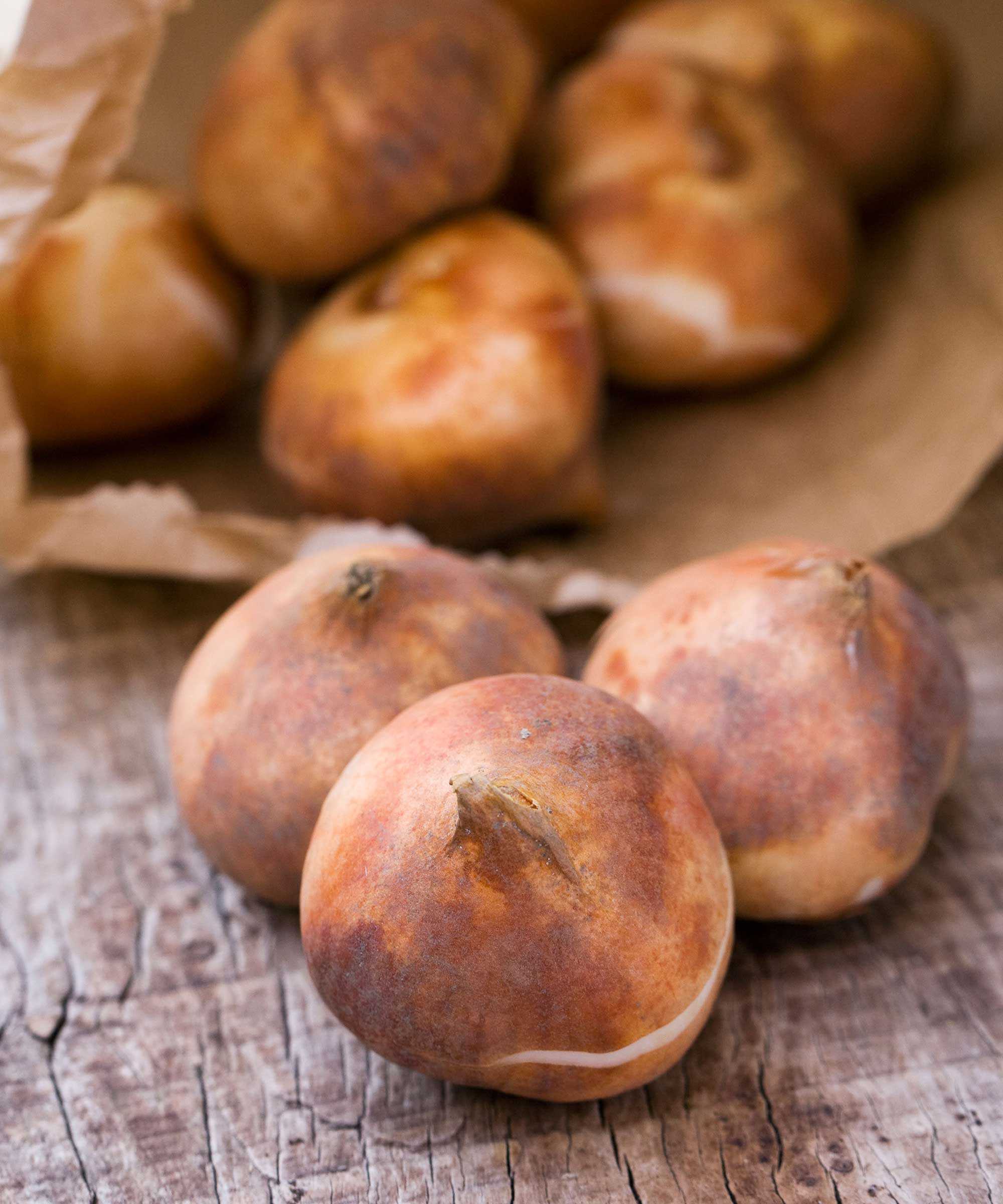
Bulbs want to be stored in a cool, dry, and well-ventilated space to keep them in the best condition. A shed, garage or outbuilding that can provide a temperature range of 50-60°F is ideal to keep the bulbs dormant and in good condition. Avoid humid environments as this can cause the bulbs to rot, so steer clear from storing bulbs in greenhouses or inside the home.
Georgina O'Grady, an experienced horticulturist and managing director at Evergreen Direct, claims that a dark environment is also ‘vital’ when storing bulbs. ‘This is because light can cause them to sprout too early,’ she explains. ‘I once made the mistake of keeping tulip bulbs near a window, and they started sprouting far too soon, leading to weaker growth when I finally planted them.’
The choice of container also plays a key role, as it can help provide air circulation that the bulbs need to be stored safely. Purchased bulbs may arrive in a plastic bag and such a container may encourage the development of moisture during storage - even if the plastic has air holes in it. Excessive moisture can cause mold and rot.
‘If they are in a plastic bag, it is best to transfer them to a paper bag or hessian sack, this will allow the bulbs to breathe before you get around to planting,’ recommends Thomas Rutter. Bulbs can also be stored in a cardboard box, but not a plastic one or any airtight container, and any lid should be open to allow moisture to escape.

Georgina O'Grady is a highly accomplished professional in the field of interior and exterior landscaping. Georgina is currently serving as the Managing Director at Evergreen Direct, where she has helped the company become a renowned name in the industry with her 15+ years of experience.
3: Keep pests away
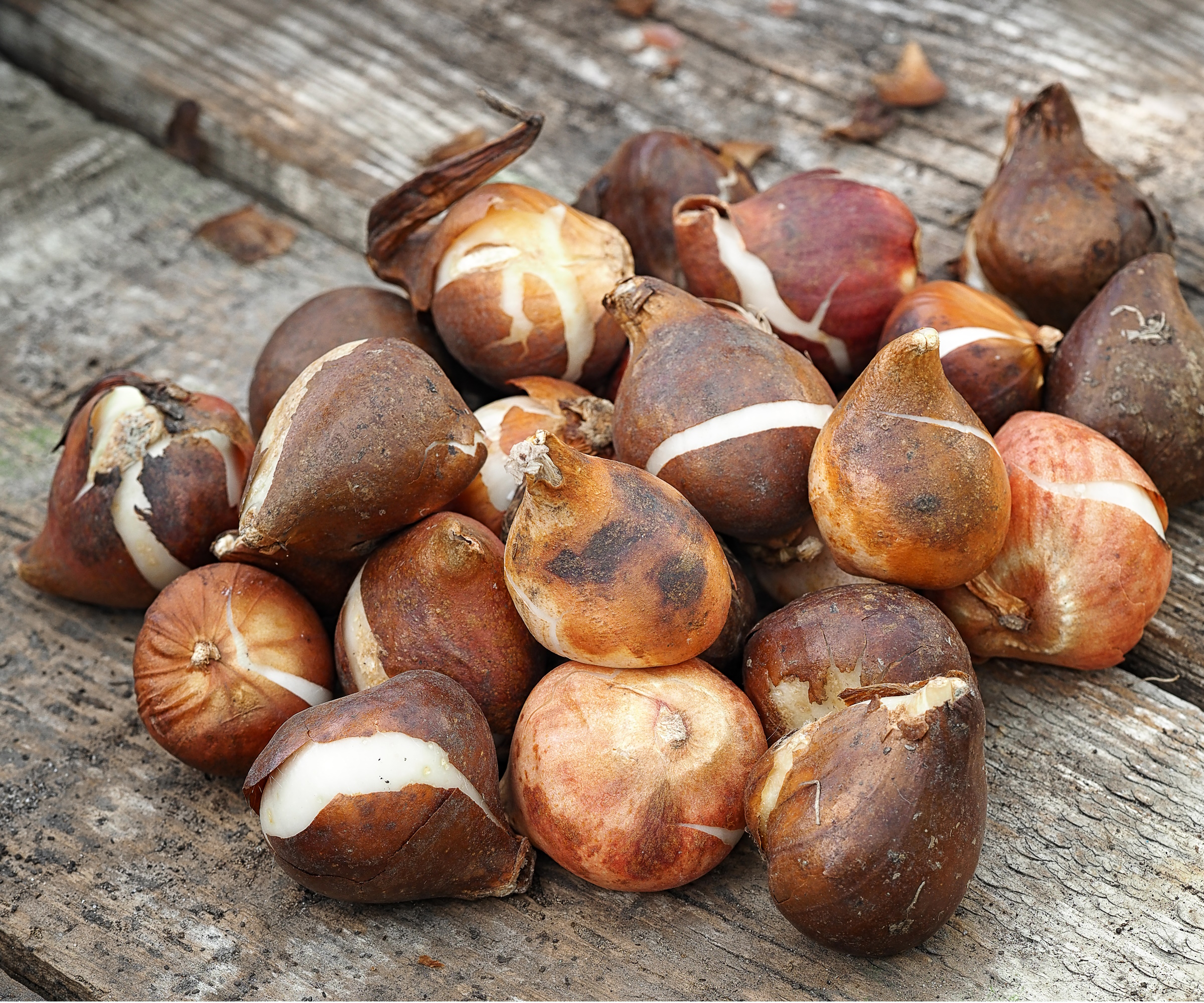
Mice and other rodents can be attracted to stored bulbs. They can nibble at the bulbs and cause significant damage - you can potentially lose large numbers of bulbs to the pests. You may have mice in a garage or shed and rodents in an attic, all of which are potential storage places for bulbs.
Any storage location has to be secure and free from rodents - check for any signs that you have mice before committing to store bulbs in that spot. And take measures to keep the bulbs protected from these roving pests.
‘I have lost many stored bulbs to common pests over the years, with mice and rats nibbling away at precious tulips, for example,’ admits Thomas Rutter. ‘My advice: ensure that your bulbs are securely protected from pests, either in a wooden crate or a sealed box with small holes for air circulation. Just be sure to open the box every few days and give your bulbs a shake.’
It is recommended to check stored bulbs regularly to spot any that are going soft in storage, so they can be quickly removed before causing others to deteriorate too.
FAQs
How do you store daffodil bulbs for next year?
Once you plant daffodil bulbs, they can happily remain in the ground to bloom again the following year. If you wish to lift daffodils and replant them, wait until they completely die back. Lift the bulbs, discard any that are soft or damaged, and let them dry out. Store the bulbs in a paper or mesh bag somewhere cool, dark, and well-ventilated ready to plant again in the fall for flowering the following spring.
As with proper storage, knowing how deep to plant bulbs also helps avoid issues with rotting or being eaten by pests. Not all bulbs are planted at the same depth, however, the general rule to avoid making bulb planting mistakes is to plant at a depth of three times the bulb’s height.

Drew has worked as a writer since 2008 and was also a professional gardener for many years. As a trained horticulturist, he worked in prestigious historic gardens, including Hanbury Hall and the world-famous Hidcote Manor Garden. He also spent time as a specialist kitchen gardener at Soho Farmhouse and Netherby Hall, where he grew vegetables, fruit, herbs, and cut flowers for restaurants. Drew has written for numerous print and online publications and is an allotment holder and garden blogger. He is shortlisted for the Digital Gardening Writer of the Year at the 2025 Garden Media Guild Awards.
